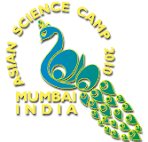
 Galaxies from the early universe. The birthplaces of planets. Dark matter. Dark energy. Since its launch in 1990, the Hubble Space Telescope has brought these mysteries into focus, its powerful gaze scanning the universe for the details planet-bound telescopes find impossible to detect.
Galaxies from the early universe. The birthplaces of planets. Dark matter. Dark energy. Since its launch in 1990, the Hubble Space Telescope has brought these mysteries into focus, its powerful gaze scanning the universe for the details planet-bound telescopes find impossible to detect.Far above the Earth's surface, Hubble floats clear of the planet's light-distorting atmosphere, beaming back images that have transfixed humanity and changed the scientific world.
Hubble's triumphs continue to accumulate thanks to a unique design that allows astronauts to repair and upgrade the telescope while it remains in orbit. Repairs keep the telescope functioning smoothly, while upgrades to the instruments bring a slew of new discoveries and science.
On October 10, 2008, astronauts will board the Space Shuttle Atlantis for Servicing Mission 4 (SM4), the final trip to the Hubble Telescope. Over the course of five spacewalks, they will install two new instruments, repair two inactive ones, and perform the component replacements that will keep the telescope functioning at least into 2014. The effort-intensive, rigorously researched, exhaustively tested mission also involves diverse groups of people on the ground throughout the country.
The mission's planning is years in the making, and its success will be the product of months of intensive preparation and the work of hundreds of people at NASA and in academia and industry.

Read these behind-the-scenes stories leading up to the mission
+ Goddard Engineers and Divers Multi-Task for Hubble
+ NASA's Clean Room: Last Stop for New Hubble Hardware
+ NASA Goddard Provides Environmental Testing for Hubble Components
+ Hubble's In-Flight Guidance from the Ground
At Goddard, where the Hubble program is administered, the Space Telescope Operations Control Center controls the telescope itself, giving the commands that prepare the telescope for the astronauts' activities and test the newly installed equipment. Goddard's Control Center closes the door that protects the telescope's delicate optics, and maneuvers Hubble into position as the shuttle Atlantis approaches.
When the shuttle is about 200 feet (60 m) away from Hubble, Goddard will command the telescope to execute a roll that brings it into position for grappling. Astronauts use the shuttle's robotic arm to capture Hubble and dock it in the shuttle's cargo bay.
 The Shuttle robotic arm captures the Hubble Telescope Image Credit: NASA
The Shuttle robotic arm captures the Hubble Telescope Image Credit: NASA A team of astronauts perform upgrades on the telescope during a spacewalk in the 2002 servicing mission. One astronaut uses a handrail (left) to hold onto Hubble while the other is attached to the shuttle's robotic arm by a foot restraint (right) Image Credit: NASA
A team of astronauts perform upgrades on the telescope during a spacewalk in the 2002 servicing mission. One astronaut uses a handrail (left) to hold onto Hubble while the other is attached to the shuttle's robotic arm by a foot restraint (right) Image Credit: NASAMany of the telescope's components, especially the instruments, were designed to be easily removed and replaced during servicing missions. This mission's primary scientific priority is the installation of Hubble's new instruments, Wide Field Camera 3 (WFC3) and the Cosmic Origins Spectrograph (COS).
Wide Field Camera 3 will be the power behind studies of dark energy and dark matter, the formation of individual stars and the discovery of extremely remote galaxies previously beyond Hubble's vision. WFC3 sees three different kinds of light: near-ultraviolet, visible and near-infrared, though not simultaneously. The camera's range is much greater than that of the instruments currently aboard.
 COS (black box) sits in its protective carrier waiting for delivery to the Hubble Telescope. This same carrier will protect COSTAR on its trip back to Earth at the end of the mission. Image Credit: NASA
COS (black box) sits in its protective carrier waiting for delivery to the Hubble Telescope. This same carrier will protect COSTAR on its trip back to Earth at the end of the mission. Image Credit: NASA COS will take the place of the device installed in Hubble during the first servicing mission to correct Hubble's flawed mirror, the Corrective Optics Space Telescope Axial Replacement (COSTAR). Since the first servicing mission, all of Hubble's replacement instruments have had technology built in to them to correct Hubble's marred vision, making COSTAR no longer necessary.

Get the facts behind the instruments. Read these related Fact Sheets:
+ Advanced Camera for Surveys Repair
+ Space Telescope Imaging Spectrograph Repair
+ Wide Field Camera 3
+ Cosmic Origins Spectrograph
The Fix is in
 Mission astronaut Mike Massimino uses a specially designed "fastener capture plate" (blue and red plate) during a STIS repair practice. The plate locks onto the instrument cover and captures the fasteners holding the cover in place as the astronaut unscrews them.
Mission astronaut Mike Massimino uses a specially designed "fastener capture plate" (blue and red plate) during a STIS repair practice. The plate locks onto the instrument cover and captures the fasteners holding the cover in place as the astronaut unscrews them.Image Credit: NASA
Astronauts plan to fix both – a challenging prospect since these repairs are beyond the scope of Hubble’s serviceable design. Hubble’s creators envisioned astronauts swapping out components, not performing delicate surgeries during spacewalks.
An interior electronics box of ACS that supplies power for ACS detectors, contains equipment affected by an electrical short. However, its location makes it inaccessible to astronauts. So instead of trying to reach the problem area, astronauts will attempt to bypass those power-shorted components entirely.
The failed power supply is connected by cables to a series of electronics boards, which are within reach but have no power because of the damaged box. Astronauts will install a new power supply to a handrail on the ACS outer enclosure, remove the electronics boards and install different ones that are compatible with the new power supply, and connect them to the new supply with exterior cables. The arrangement simply cuts the damaged box out of the equation.
 Innovative tools for the repairs are designed and developed by Goddard engineers and tested by the astronauts for refinements.
Innovative tools for the repairs are designed and developed by Goddard engineers and tested by the astronauts for refinements.Image Credit: NASA
As each of Hubble's instruments and components is repaired or installed, Goddard performs tests to ensure that everything is working correctly. Once the work is completed, Hubble will be ready for peak performance with a grand total of five instruments: WFC3, COS, ACS, STIS and the Near-Infrared Camera and Multi-Object Spectrograph (NICMOS).
But before it can try out its new equipment, the telescope needs maintenance. Hubble's batteries store the energy that powers the telescope during the "nighttime" portion of its orbit, when the Earth blocks the Sun's rays. Astronauts will replace all six of Hubble's 125-pound batteries with new, more effective versions.
 Behind a pair of aft shroud doors, Hubble's six gyroscopes are found within 3 rate sensor units (circled in image). Image Credit: NASA
Behind a pair of aft shroud doors, Hubble's six gyroscopes are found within 3 rate sensor units (circled in image). Image Credit: NASA Hubble's insulating blankets, which maintain the telescope's normal operating temperature, eventually break down because of their exposure to space. Astronauts will cover key Hubble equipment bays in fresh insulation, also called a New Outer Blanket Layer (NOBL).
Finally, they will install a new device, the "soft capture mechanism." This simple device will allow a robotic spacecraft to attach itself to Hubble someday, once the telescope is at the end of its life.

Get the facts behind the maintenance activities. Read these related Fact Sheets:
+ Batteries
+ Gyroscopes
+ Fine Guidance Sensor
+ New Outer Blanket Layer
+ Soft Capture and Rendezvous System
Restored and updated, Hubble will continue on its journey around the Earth, its new components merging seamlessly with the old, a rejuvenated telescope ready for years of groundbreaking revelations from the universe.
Source : NASA


































0 komentar:
Posting Komentar